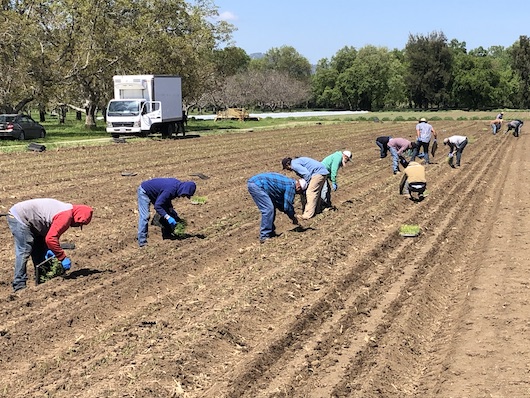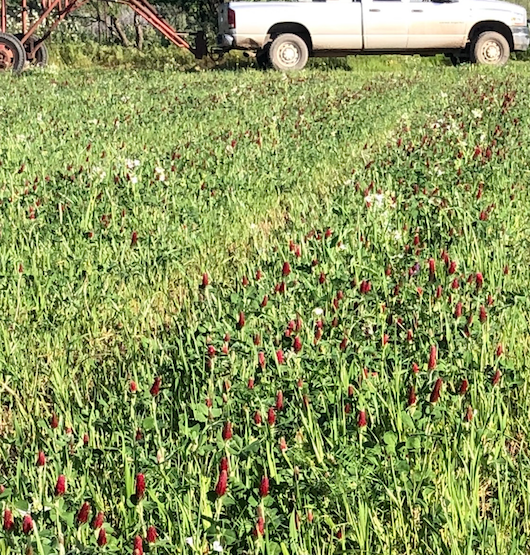
Planting onions, social distance style —
The many sad events of the last month include the sudden absence of restaurant and art venues in our communities, the massive unemployment, and the loss of the alternative weekly press in communities across the country. That last is close to my heart as my sister and brother in law had to close their three weekly papers – incredible assets in Sacramento, Reno and Chico – when their advertising revenue disappeared overnight.
In the world of food, there have been disruptions up and down the supply chain. Because half of the food grown in the US used to go to food service (restaurants, schools, cafeterias), many suppliers suddenly saw their markets evaporate and tremendous quantities of fresh produce and dairy have been wasted because the market channels couldn’t adapt quickly enough. There is plenty of food, but matching it to demand and getting it where it is needed is the priority. Many of us note that this should have always been the priority — and has always been the weakness of our current global food system. Food banks are facing massive need, and companies that provide on-line food purchases and delivery services are booming. Schools are another part of the response, as many of them are providing emergency food, feeding thousands of children despite being closed.
Perhaps we cannot be completely sanguine about the supply of food. Under pressure from state and local officials, several huge pork and chicken plants have closed recently because of illnesses among their employees. For example, Smithfield Foods closed a mammoth pork plant in Sioux Falls “until further notice.” A plant owned by the Delaware chicken company Allen Harim has seen a 50% workforce decline and has reduced operations correspondingly. In an interview with Fern’s Ag Insider, Craig Watts, a former contract poultry grower, said “Big is fragile. We’re seeing it now. When you have a problem, you have a big problem.”
Local Food activists have responded in multiple ways, with farmers markets reinventing themselves overnight. In some states the farmers markets are going to on-line systems, customers are ordering in advance and produce is being placed in the trunks of cars as they drive by. With the proactive response of farmers markets that Full Belly attends, it appears to us as if the markets might be a safer place to shop than grocery stores. The Community Alliance with Family Farmers has created a Farmers Assistance Fund to assist family farmers through the crisis. Flour, eggs and garden seeds are all in high demand, as families bake and garden at home.
In March when Governor Newsom established the California Health Corps of retired health care workers and medical and nursing students he was planning ahead for when the coronavirus outbreak might peak in California. Within days, sign-ups topped 70,000. Reflecting on this, a friend of mine who is familiar with the shortage of labor on farms, commented that maybe we need a similar effort for farm labor. During WWII in the US, women – many of them from urban areas – created Women’s Land Armies to provide labor on farms. Declaring January 12, 1943 Farm Mobilization Day, President Roosevelt even delivered a nationwide address in which he underscored the important role to be played by American agriculture in winning the war.
At Full Belly we are grateful that we have been able to continue farming and filling CSA boxes, despite this being a time of year when produce is at its scarcest point in the farming cycle. We are grateful that we are part of a community that feels connected to the sources of its food. We are inspired by all the phone calls that we are getting as people struggle to figure out how to best support the food banks, local farms, and the elderly and vulnerable in each and every community.
Perhaps the massive fires and repeated electrical outages that have occurred over the last few years have given us warning that this is a time of upheaval. Because of the changing climate, all the lessons we can learn are likely to stand us in good stead in future. This moment may be an opportunity for building more resilient local networks and more lasting connections. We hope that you are enjoying cooking at home at the same time as we look forward to the day when the restaurants and art venues open back up!
Blessings on your meals.
— Judith Redmond

One of our cover cropped fields (above) — the crimson clover thrives after mowing.

